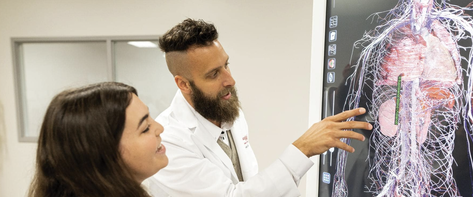Neuroanatomy & Development
CFS 51301
Campbellsville University - School of Chiropractic

Course Description
This course provides the student with lecture and laboratory study of the human nervous system. Structures of the central and peripheral nervous system are reviewed, focusing on neuroanatomy, neurophysiology, and the development of the human nervous system. Based on an understanding of normal human embryological development various congenital neurological disorders are explored along with basic clinical problem solving by applying neuroanatomical and neurophysiological principles to case studies. The key goal of this course is to provide introductory knowledge of neuroanatomy and basic clinical problem solving.
How this course relates to other courses
This course is a key component is the development of a deep understanding of the human nervous system. It complements the concurrent course of Clinical Anatomy and Physiology I, and Cell Physiology and Histology, providing the necessary background in developing clinical skills in physical assessment and functional evaluation, diagnosis, critical thinking, and problem solving.
This course provides the student with lecture and laboratory study of the human nervous system. Structures of the central and peripheral nervous system are reviewed, focusing on neuroanatomy, neurophysiology, and the development of the human nervous system. Based on an understanding of normal human embryological development various congenital neurological disorders are explored along with basic clinical problem solving by applying neuroanatomical and neurophysiological principles to case studies. The key goal of this course is to provide introductory knowledge of neuroanatomy and basic clinical problem solving.
How this course relates to other courses
This course is a key component is the development of a deep understanding of the human nervous system. It complements the concurrent course of Clinical Anatomy and Physiology I, and Cell Physiology and Histology, providing the necessary background in developing clinical skills in physical assessment and functional evaluation, diagnosis, critical thinking, and problem solving.
|
464 pages from Michigan State University
221 pages from Neuroanatomy Class |
